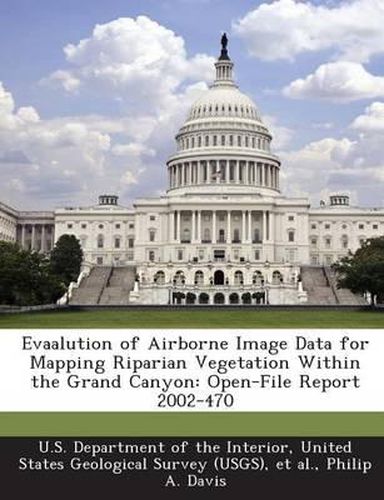Readings Newsletter
Become a Readings Member to make your shopping experience even easier.
Sign in or sign up for free!
You’re not far away from qualifying for FREE standard shipping within Australia
You’ve qualified for FREE standard shipping within Australia
The cart is loading…






This study examined various types of remote-sensing data that have been acquired during a 12-month period over a portion of the Colorado River corridor to determine the type of data and conditions for data acquisition that provide the optimum classification results for mapping riparian vegetation. Issues related to vegetation mapping included time of year, number and positions of wavelength bands, and spatial resolution for data acquisition to produce accurate vegetation maps versus cost of data. Image data considered in the study consisted of scanned color-infrared (CIR) film, digital CIR, and digital multispectral data, whose resolutions from 11 cm (photographic film) to 100 cm (multispectral), that were acquired during the Spring, Summer, and Fall seasons in 2000 for five long-term monitoring sites containing riparian vegetation. Results show that digitally acquired data produce higher and more consistent classification accuracies for mapping vegetation units than do film products. The highest accuracies were obtained from nine-band multispectral data; however, a four-band subset of these data, that did not include short-wave infrared bands, produced comparable mapping results. The four-band subset consisted of the wavelength bands 0.52-0.59 ?m, 0.59-0.62 ?m, 0.67-0.72 ?m, and 0.73-0.85 ?m. Use of only three of these bands that simulate digital CIR sensors produced accuracies for several vegetation units that were 10% lower than those obtained using the full multispectral data set. Classification tests using band ratios produced lower accuracies than those using band reflectance for scanned film data; a result attributed to the relatively poor radiometric fidelity maintained by the film scanning process, whereas calibrated multispectral data produced similar classification accuracies using band reflectance and band ratios. This suggests that the intrinsic band reflectance of the vegetation is more important than inter-band reflectance differences in attaining hi
$9.00 standard shipping within Australia
FREE standard shipping within Australia for orders over $100.00
Express & International shipping calculated at checkout
This study examined various types of remote-sensing data that have been acquired during a 12-month period over a portion of the Colorado River corridor to determine the type of data and conditions for data acquisition that provide the optimum classification results for mapping riparian vegetation. Issues related to vegetation mapping included time of year, number and positions of wavelength bands, and spatial resolution for data acquisition to produce accurate vegetation maps versus cost of data. Image data considered in the study consisted of scanned color-infrared (CIR) film, digital CIR, and digital multispectral data, whose resolutions from 11 cm (photographic film) to 100 cm (multispectral), that were acquired during the Spring, Summer, and Fall seasons in 2000 for five long-term monitoring sites containing riparian vegetation. Results show that digitally acquired data produce higher and more consistent classification accuracies for mapping vegetation units than do film products. The highest accuracies were obtained from nine-band multispectral data; however, a four-band subset of these data, that did not include short-wave infrared bands, produced comparable mapping results. The four-band subset consisted of the wavelength bands 0.52-0.59 ?m, 0.59-0.62 ?m, 0.67-0.72 ?m, and 0.73-0.85 ?m. Use of only three of these bands that simulate digital CIR sensors produced accuracies for several vegetation units that were 10% lower than those obtained using the full multispectral data set. Classification tests using band ratios produced lower accuracies than those using band reflectance for scanned film data; a result attributed to the relatively poor radiometric fidelity maintained by the film scanning process, whereas calibrated multispectral data produced similar classification accuracies using band reflectance and band ratios. This suggests that the intrinsic band reflectance of the vegetation is more important than inter-band reflectance differences in attaining hi